
We often think of the Krag-Jørgensen as a series of U.S. rifles and only occasionally about the Norwegian or Danish versions. But there were a lot of Krag variants and we’ve covered them here.
Denmark
Danish Krags generally feature barrel jackets, making appear much thicker than other Krags. Their magazine doors swing forward instead of down. They are chambered for the Danish 8x58mmR cartridge and display Danish crowns on the barrel and, usually, the receiver. Cocking pieces are also unique as they are shaped as a swoop like the Lebel, instead of the round pull of US and Norwegian Krags. Dating a Danish Krag is simple, as the manufacture date is stamped on the receiver and a proof date is set on the barrel. All except the Model 1928 are straight-wrist stocked.
Model 1889 Rifle

| Cartridge | 8x58R | Length | 52.4″ | Barrel Length | 32″ | Weight | 9.4 lb | Bayonet Lug | yes |
|---|
The Model 1889 was the first military adopted Krag-Jørgensen rifle. It features the distinct Danish jacketed barrel, giving it a thick appearance. The only safety provided was a half-cock position. Original 1889 rifles are extremely rare as nearly every single one was updated to the 1889/10 pattern. The rear sight is a flip-up ladder.
Model 1889/10 Rifle

| Cartridge | 8x58R | Length | 52.4″ | Barrel Length | 32″ | Weight | 9.4 lb | Bayonet Lug | yes |
|---|
The 1889/10 is an unofficial collector’s designation for Model 1889 Krags either produced after 1910 or updated to the 1910 changes. These included refitting the sights for the new 1908 cartridge and attaching a safety lever on the right side of the receiver, behind the bolt. If this safety is present, the gun was updated or post 1910. If absent, it is the rare original 1889. The rear sight is a flip-up ladder, updated for up to 2,000 meters.
Model 1889/13 Cavalry Rifle

| Cartridge | 8x58R | Length | 43.3″ | Barrel Length | 22.8″ | Weight | 7.7 lb | Bayonet Lug | no |
|---|
The Model 1889 Cavalry Rifle was introduced in 1912 after trials with a similar prototype. It is a purpose-built carbine, lacking the barrel jacket or a bayonet lug. The stock is not quite half-length but does not run all the way forward and lacks a metal cap. The ladder sight has been replaced with a slider type (like a Gew.98 rifle). This carbine is setup for a side sling, with a swivel on the left side of the stock just at the end of the receiver tang and a metal “button” just above the trigger that would set into a leather shield on the cavalryman’s back. These will display the serial prefix “R.”
Model 1889/17 Engineer Carbine

| Cartridge | 8x58R | Length | 43.3″ | Barrel Length | 22.8″ | Weight | 8.6 lb | Bayonet Lug | yes |
|---|
The Model 1889 Engineer’s Carbine was introduced in 1917 and shares dimensions with the Cavalry. It features a handguard with cap and bayonet lug. This carbine is setup for an infantry-style sling with swivels on the bottom of the bands and buttstock. The rear sight is a slider-type. These will display the serial prefix “I.”
Model 1889/23 Cavalry Carbine

| Cartridge | 8x58R | Length | 43.3″ | Barrel Length | 22.8″ | Weight | 8.5 lb | Bayonet Lug | yes |
|---|
The Model 1889 Cavalry Carbine saw an update in 1923 with the inclusion of a bayonet lug. Otherwise identical to the earlier 1889 Cavalry Carbine but with a stock cap and bayonet lug. Retains the same sights and serial prefix.
Model 1889/24 Artillery Carbine
| Cartridge | 8x58R | Length | 43.3″ | Barrel Length | 22″ | Weight | 8.8 lb | Bayonet Lug | yes |
|---|
The Model 1889 Artillery Carbine was introduced in 1924 and produced both from cut-down long rifles and new manufacture. If these carbines display a serial below 120282 they were reworked from a long rifle, otherwise they are new production.
Model 1889/24 Infantry Carbine

| Cartridge | 8x58R | Length | 43.3″ | Barrel Length | 22″ | Weight | 8.8 lb | Bayonet Lug | yes |
|---|
The Model 1889 Infantry Carbine was introduced in 1924 and produced both from cut-down long rifles and new manufacture. If these carbines display a serial below 120282 they were reworked from a long rifle, otherwise they are new production.
Model 1928 Marksmanship Rifle

| Cartridge | 8x58R | Length | 46″ | Barrel Length | 23″ | Weight | 11.8 lb | Bayonet Lug | no |
|---|
The Model 1928 Marksmanship rifle is a non-scoped Sniper’s rifle. It sports a floating heavy barrel, receiver-mounted rear aperture sight, globe front sight, half-length stock with pistol grip, and underside sling swivels. These rifles display an “Fsk” serial prefix. A civilian target rifle in 6.5mm was also produced that greatly resembles the M28.
—————————————————————————————————————-
United States of America
Differentiating U.S. Krag-Jørgensen rifles is not an easy task. Due to frequent breakages, swapped out sights, and doctrine updates, US Krags were constantly refitted and updated. Finding a pure example of any model before 1898 is a challenge. For anyone wanting details on a particular rifle or especially a carbine, please spend the money on an appropriate and detailed book. This is just a Quick and Dirty rundown and, because of similarities especially between the rifles, the images are going to be equally similar. Receiver markings are key for U.S. Krags.
Model 1892 Rifle

| Cartridge | .30-40 | Length | 49.1″ | Barrel Length | 30″ | Weight | 9.3 lb | Bayonet Lug | yes |
|---|
The Model 1892 long rifle was the first repeating rifle in U.S. service. It suffered from near immediate issues from both inherent flaws and troops untrained in magazine rifles. Because of a number of updates, the latter 1892 rifles shared very few interchangeable parts with the earlier ones. Concern for potential confusion and strain on armorers led to the US ultimately renaming each subsequent updated rifle. On the whole, US long rifles are externally quite similar and the devil will be in the details.
Model 1892 rifles are easily identified by being stamped not with their model number, but the year of manufacture: 1894 or 1895.
Model 1896 Rifle

| Cartridge | .30-40 | Length | 49.1″ | Barrel Length | 30″ | Weight | 9.2 lb | Bayonet Lug | yes |
|---|
The Model 1896 Rifle has two distinct features separating it from the late Model 1892. First, the cleaning rod was adding difficulty to the stacking of arms, so it was replaced by 3-sections of threaded rod stored in the butt of the rifle. Second, a simple method for keeping the bolt still when withdrawn was added. This is a simple pin set through the extractor and matching notches on either side of the split receiver bridge.
Like every other US Krag, the Model 1896 underwent several updates, usually involving the magazine cutoff and rear sight. After the frequent updates to the 1892, the year of manufacture was dropped and replaced with “Model 1896” on the receiver.
Model 1896 Carbine

| Cartridge | .30-40 | Length | 41.2″ | Barrel Length | 22″ | Weight | 8.1 lb | Bayonet Lug | no |
|---|
The Model 1896 Carbine was actually technically introduced as a late-model 1892 carbine in 1895. Not many were produced and apparently none were fully assembled when the decision came down to standardize on the Model 1896 Rifle. These are simple, shortened rifles with half stocks and a sling bar on the left side of the wrist. They have no provision for a bayonet. After roughly 5,000 were produced, complaints from cavalry units resulted in a thickening and rounding of the safety and the reversal of the magazine cut-off. It was found to be better served in the OFF position when flipped down. This reversal was retroactively added to previous models.
Model 1896 Carbines feature the same receiver as the long rifle, but command a premium when sold. Special care should be taken when attempting to purchase a carbine as a great many are faked.
Model 1898 Rifle

| Cartridge | .30-40 | Length | 49.1″ | Barrel Length | 30″ | Weight | 9.2 lb | Bayonet Lug | yes |
|---|
The Model 1898 Rifle was the officially adopted rifle featuring the reversed cut-off invented for the 1896 Cavalry Carbine. It also sports a sharply cut relieve in the stock for the shaft of the bolt handle (as opposed to the previously rounded notches). This rifle also began production with the 1896 rear sight before the adoption of the 1898 rear sight. Again, like other Krags, it could sport an updated sight all the way through the 1900’s. These rifles will be marked “Model 1898” on the receiver.
Model 1898 Carbine

| Cartridge | .30-40 | Length | 41.2″ | Barrel Length | 22″ | Weight | 7.9 lb | Bayonet Lug | no |
|---|
The 1898 Carbine was simply the same as the Model 1896 Carbine, but built from an 1898 receiver. Most were later refitted with Model 1898 rear sights and Model 1899 stocks (explained with the next carbine). These will be marked “Model 1898” on the receiver, but again, be careful of fakes.
Model 1899 Carbine

| Cartridge | .30-40 | Length | 41.2″ | Barrel Length | 22″ | Weight | 7.8 lb | Bayonet Lug | no |
|---|
The Model 1899 Carbine introduced a new, slightly longer stock, improved handguard, and barrel band. These were all provided because of issues with the newer 1898 sight sitting right at the barrel band and causing difficulties in handling. Unfortunately, enough 1898 sights were not available for the first off the line, so these carbines may be found with 1896 sights and handguards (but still a longer forestock). In 1900 an improved handguard was developed to protect the 1896 rear sight. This pattern was adopted to later sights (like the 1901) as well. This carbine also dispensed with the sling bar.
The Model 1899 Carbine will either have a receiver marked “Model 1899” or an original 1898 receiver, with the 8 over struck by a 9. Because there is not an 1899 rifle and they have unique handguards, these carbines can be safer to identify.
Philppine Constabulary

| Cartridge | .30-40 | Length | 41.2″ | Barrel Length | 22″ | Weight | 8.5 lb | Bayonet Lug | yes |
|---|
The Philippine Constabulary rifle was produced to fulfill several standing requests for a shortened Krag rifle for high school and overseas use. The official designation was “U.S. Magazine Carbine caliber .30, Model 1899 altered for knife bayonet and gun sling.” These short rifles were produced from Model 1899 carbines and feature the 1901 rear sight with 1902 protective handguard. They were provided to various colleges and academies and the Philippine Constabulary. Production was from 1906 and carried out at Springfield and in Manila. Examples from other receivers and featuring differing sights and handguards are likely small-batch cadet production.
—————————————————————————————————————-
Norway
Norwegian Krag-Jørgensen Rifles were the last to be adopted and implemented a number of improvements. They are generally leaner looking thanks to their small-bore 6.5mm cartridge. Their stocks also feature semi pistol grip for added control. At the time, their ammunition was shared with the Swedish 1896 Mauser for mutual defense. But the Mauser action was much stronger and the Swedish cartridge saw numerous updates. Most commercial 6.5x55mm cartridges today are produced for the Mauser and should not be used in the weaker Krag action. Years of manufacture will be stamped on the receiver, over the chamber.
Model 1894 Rifle

| Cartridge | 6.5×55 | Length | 49.7″ | Barrel Length | 30″ | Weight | 8.8 lb | Bayonet Lug | yes |
|---|
The Model 1894 Rifle features a half-length cleaning rod under the barrel and unique stacking loop. To stack arms the cleaning rod from one rifle is set through the loop of several so they may stand together. The hook is for taking up the sling for parade use. The earliest Norwegian Krags were produced at Steyr and will be so marked, with the balance from Kongsberg.
Model 1896 Cavalry Carbine

| Cartridge | 6.5×55 | Length | 40″ | Barrel Length | 20.5″ | Weight | 7.5 lb | Bayonet Lug | no |
|---|
The Model 1896 Cavalry Carbine was a shortened Krag with a half-length stock and short handguard between the receiver and rear sight. It has a left side sling swivel on the barrel band and rear sling swivel just under the wrist, the latter was eventually replaced with a swivel on the left of the trigger guard.
Model 1897 Artillery and Engineer Carbine

| Cartridge | 6.5×55 | Length | 40″ | Barrel Length | 20.5″ | Weight | 7.5 lb | Bayonet Lug | no |
|---|
The Model 1897 Artillery and Engineer Carbine is essentially identical to the Model 1895 with a slight difference in sling configuration. Instead of being set under the wrist, the rear sling swivel was roughly four inches from the buttplate.
Model 1904 Engineer Carbine
| Cartridge | 6.5×55 | Length | 40″ | Barrel Length | 20.5″ | Weight | 8.4 lb | Bayonet Lug | no |
|---|
The Model 1904 Engineer Carbine is similar to earlier carbines but stocked nearly to the front sight, like the long rifle, but lacks a bayonet lug. The trigger guard sports a hole for a quick detach sling.
Model 1907 Field Artillery Carbine
| Cartridge | 6.5×55 | Length | 40″ | Barrel Length | 20.5″ | Weight | 8.5 lb | Bayonet Lug | xxx |
|---|
The Model 1907 Field Artillery Carbine is essentially identical to the Model 1904 with a slight difference in sling configuration. The rear barrel band features a left side ring and the buttstock an under slung swivel.
Model 1912 Carbine
| Cartridge | 6.5×55 | Length | 43.6″ | Barrel Length | 24″ | Weight | 8.8 lb | Bayonet Lug | xxx |
|---|
The Model 1912 Carbine is the most commonly encountered of the short rifles. It features a full length stock and handguard, ending in an Enfield-like nosecap with bayonet lug. This last component proved to be too weak and was fixed with a simple clamp set over it on existing carbines. New production included an improved nosecap with integrated wide band. The 1912’s rear sight was also moved back, just in front of the receiver, in order to increase the sight radius. It also was equipped to flip completely over onto a waiting stud to serve as a short range battle sight.
Model 1923 Sniper Rifle

| Cartridge | 6.5×55 | Length | 45.9″ | Barrel Length | 26.2″ | Weight | xxx lbs | Bayonet Lug | yes |
|---|
The Model 1923 Sniper Rifle has heavier barrel, a full stock with distinct checkered pistol grip, and nosecap with bayonet lug. It also features an adjustable rear aperture sight mounted to the back of the receiver and front sight protective wings. The buttplate is grooved. The model was short lived due to poor balance and handling.
Model 1925 Sniper Rifle
| Cartridge | 6.5×55 | Length | 49.7″ | Barrel Length | 30″ | Weight | 9.9 lb | Bayonet Lug | yes |
|---|
The Model 1924 Sniper Rifle has a heavier barrel and is stocked like the original 1894 with a more pronounced and checkered pistol grip. It features an adjustable rear aperture sight like the Model 1923 but also retains a barrel mounted leaf sight. The buttplate is grooved. This pattern was produced in greater numbers.
Model 1930 Sniper Rifle

| Cartridge | 6.5×55 | Length | 49.2″ | Barrel Length | 29.5″ | Weight | 11 lb | Bayonet Lug | xxx |
|---|
The Model 1930 Sniper Rifle features a half length stock and handguard, checkered and pronounced pistol grip, grooved buttplate, and even heavier barrel. It does not have a barrel mounted sight but retains the adjustable rear aperture. The front sight is interchangeable with different inserts available.
Model 1894/43 Rifle

| Cartridge | 7.92x57mm | Length | 49.7″ | Barrel Length | 30″ | Weight | 8.8 lb | Bayonet Lug | yes |
|---|
During the German occupation of Norway forced manufacture of Krag rifles began again at Kongsberg. Original Model 1894 long rifles were produced from available parts + new made. They were created in both 6.5 and 7.92mm and will be marked over the chamber with a German serial beginning with N.
“Stomperud”

| Cartridge | 6.5×55 | Length | 43.7″ | Barrel Length | 24″ | Weight | xxx lbs | Bayonet Lug | yes |
|---|
During the German occupation of Norway forced manufacture of Krag rifles began again at Kongsberg. Saboteurs and willful disobedience meant that production continued at a crawl. In a bid to get more usable rifles, the Germans began a program of using existing 1894 long rifles to create a shorter pattern rifle. The original production date was ground off and a new one struck. Simpler sling swivels were fitted and the bayonet lug retained.
Special thanks goes out to Christian Øelund for all the help sorting out the Danish and Norwegian models in particular!

C&Rsenal releases their flagship series “Primer” every other week. It focuses on one firearm of the Great War at a time, in depth with animations, live fire demonstrations, and historical context! Our mission is to document and describe historical military small arms from across the world. We hope to share our love for all the attention that went into the design, development, manufacture, and issuance of these pieces.





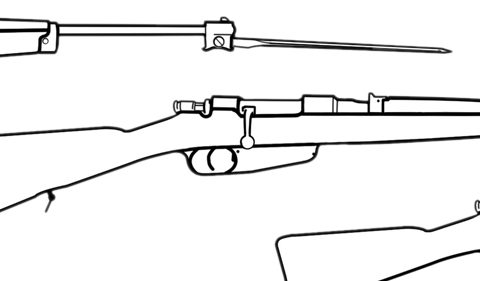
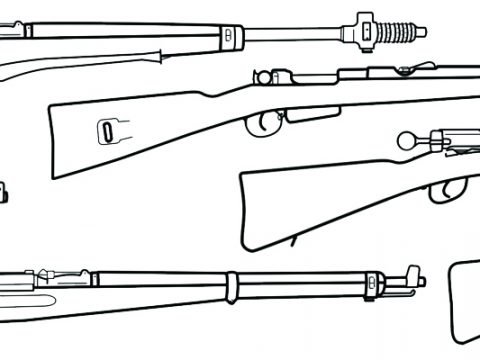
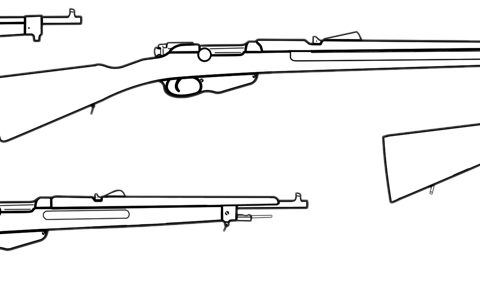
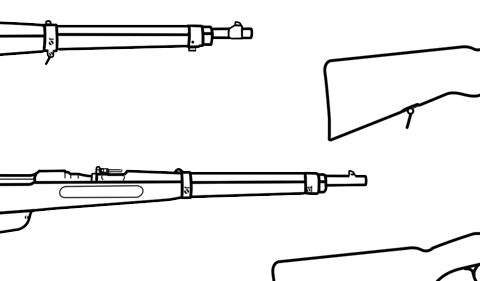
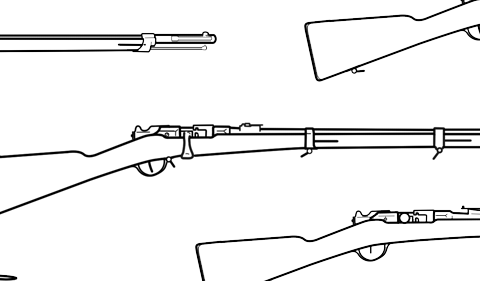
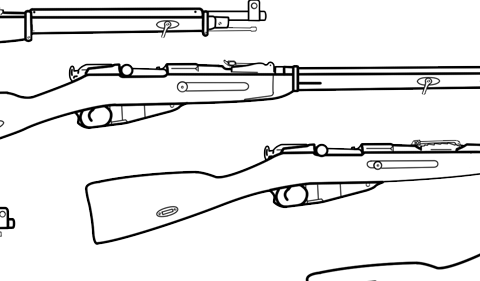
If an 1898 Krag (Springfield) Rifle SN# 2436xx has a 1896 Rear Sight … which Upper Hand Guard would fit best?
I’m afraid at that level of detail you’re probably going to need to pick up one of the more detailed Krag books from Amazon. We don’t have that data handy.
I have a barreled action that is marked “STEYR 1897”. The action chambers a 6.5 X 55mm cartridge. Is this an 1894 and does anyone know where I can find a military or sporterized stock?
Michael
Hi I have the same rifle. I had Randy duplicate a stock for me based on Krag design. There are some fitting problems I’m, overcoming now. The side box and the action both have a slightly different dimension than some of the other rifles. Not much but enough. When I get mine finished Randy will be able to make a master from it for duplication.
There was only a small run of Steyr rifles compared to the others made. My great uncle brought this back from overseas and I found it in the shed with an oak stock he was putting on it. It was sitting in water and mud on the old dirt floor with half a roof gone. He gave it to me and said good luck. He said it shot well but that he wasn’t going to do anything more with it. I got an original M95 too in almost the same shape but with the original stock. I removed a lot of rust but they are both in working order now. http://www.murraysgunstocks.com Good luck!
More detail….the Steyr rifles were made in Austria and if my research is correct, only 3,000 or so were made. I was thinking more into the 30,000 but that is what the feedback is.
I have a steyr rifle dated 1897 that looks very close to the Danish 1896 cavalry carbine. Differences being a 23 and 3/8″ inch barrel, no half stock, and the rear ladder sight is right in front of the receiver as on the 1912 carbine. The rear sight will swivel 180 degrees as on the 1912 model. The waiting post is gone, but there is a threaded hole in the barrel in about the right place. The stock is close to the 1912 model but appears to have been cut down. There are no barrel bands. This rifle is 6.5 M.M.. I have not determined the chamber length yet. It was brought back from Europe after WW II, and was a closet queen for many years. I am looking for any drawings/disassembly info. I managed to remove the bolt by pushing the extractor off center. I can’t get the bolt back in the rifle. It appears that the extractor needs to be removed to put the bolt back in the receiver and then put back on with the bolt partially forward. The file has some surface rust on the barrel exterior. The moving parts have lots of grease on them. With a thorough cleaning and sizing of the chamber, it is probably a shooter. I hope so. Any info or help with serial number info( this rifle S.N. is 19,560), drawings, assembly instructions or tricks is greatly appreciated. I want to find out as much as I can as to the history of the rifle, and hopefully shot it. I appears to be a light, easy handling rifle that would be a fun shooter or hunt er for medium sized game..
Thanks for the help, David Babcock
place the bolt into the back of the reciever.
At a certain point, you will be able to lay the
extractor into the bolt body as you close the bolt.
Should not need straining to do this.
Probably you tube video somewhere.
coastie
You could have something that has been shade tree repaired over the years and is mix matched on things. A missing sight would make me think that, if a sight has been removed, was in lost in the replacement of a barrel or stock or something? You had better give it a real good once over to make sure it is safe to operate and there’s no cracks in a receiver or anything hidden under a little rust or grease. Any markings on the gun? Stamps can often indicate country of origin etc. The bolt should be a reasonably easy fix once you get the type right and such unless its some super rare thing there are no spare parts for. Maybe even a good disassembly and cleaning would do the trick.
http://www.kvf.no/vaapen.php?type=Rifle&weaponid=RIF0263
http://www.kvf.no/vaapen.php?type=Rifle&weaponid=RIF0264
29000 M/1894 Were made at Österreichische Waffen Gesellschaft, Steyr in 1896 and 1897 for the Norwegian State. And 4900 for commercial sale in Norway in 1897.
So 33900 M/1894 Krag Rifles totaly made at Steyr.
hello-did Springfield ever make a takedown version of the 1898 krag??
I would say not (doesnt actually mean no). I couldnt seethe point in a takedown of an arm with such a bulky receiver area, plus, the carbines were kind of “the answer” the length and carry issues. Remember, Springfield of old is not Springfield of today. The original Springfield was a government arsenal, where today it is a private company who owns the copyright to the name, image, etc. They started out in the 60’s or 70’s I believe ( might fact check that, not positive) making civilian M14s. The Krag was under arsenal manufacture, which basically was to manufacture a government owned patent. The takedown pattern rifles were mostly (I did say mostly, not entirely) civilian manufacturers i.e. Winchester, Remington, Marlin, etc.
The U.S. 1898 rifle is listed with a 22 inch barrel.
Blame the proofreader.
Thanks!
I have a 6.5×55 with a 22″ barrel. It has a couple of what appear to be serial numbers, one just above the trigger and one on the left side of the barrel just in front of the bolt action. The year “1905” is stamped over the chamber on the receiver. I didn’t see any example that exactly matched my gun. It also has no sights but has a scope mount w/ Swift #830 scope. Anyone have any idea of what I really have and/or the value?? Thanks
How can you tell a carbine serial number from a rifle serial number?
I have a 1898 carbine serial number 816797, how do you check for fakes?
you can’t. Carbines were selected randomly. The only good way to identify a carbine is if it has an 1899 date on the receiver. Otherwise look for the carbine stock, sling bar and carbine rear sight and hand guard. If any one of those things s missing or wrong, your weapon is suspect.
I meant the 1899 models are the only ones identifiable. The 1898’s have a sling bar but it was deleted in 1899, most 1899’s will have 1901 cartouches and 1901 or 02 rear sights. if you have a 98 carbine it will have a sling bar. serial numbers wont help to identify your weapon as a carbine as very few were identified as carbines by their number.
I require a screw to suit a 1889 Danish Krag Jorgenson Artilleryy. The screw is situated on the left hand side of the gun, near the bolt. It is a M6 Thread. Please send me a image if you think you have one of these . Thanks
Hi, Othais!
I found photos of interesting experimental variant of norwegian carbine with folding bayo. Here it is:
https://digitaltmuseum.no/021025488005?page=2&query=karabin&pos=27
Oh dang, neat.
It looks like direct copy of italian folding bayo for me. But I don’t check similarity yet. Also, there are planty of Jarmann rifles on this website: with experimental magazines, singleshots, carbines and other modifications.
I just purchased a 6.5 x 55 Krag serial # 89342 with a stamp of 1909 on top of the receiver. Overall length 42 inches. Barrel length 21 inches. I would like to know what model and year of manufacture if someone can help me out. Thanks
You guys should really do a video on this gun – preferreably multiple.
Greetings from Norway!
Oh, every body remember:
NORWEGIAN KRAG RIFLE BARRELS HAVE LEFT HAND THREADS!!
coastie
Hello all, I have a question about the Krag stocks. I was fortunate enough to pick one up at a local Auction for $125 without a bolt and got one at my gunship the same day. It’s a model 1896 but I wanted to know if they made them with tiger wood stocks. It has a 1901 cartouche with inspectors initials, if anybody knows if this is real or fake it would mean a lot, thanks!
I would be hard pressed to think this would be original just based on military mindset. The point in almost everything is uniformity. A tiger stock, though I’m sure its gorgeous and would love to see pictures, I doubt is original.
Am working on what appears to be an artillery carbine in 6.5×55 – I THINK – there are no markings on the gun for caliber – 30/40 is too big (long) – if it is 6.5×55, will modern ammo work in it ?
I cant get enough of the YouTube and full 30 videos about the weapons histories. God bless you guys! I watch and rewatch these videos for days and try to absorb as much knowledge as humanly possible. If you ever needed examples of firearms I have for future videos, let me know, I’d gladly contribute and support ya’ll any way I can to continue to feed the information monkey. In relation to Krags, sadly, if you pick one of these up thatve been hacked up “sporterized” finding stocks for restoration is extremely difficult and expensive. The metal on mine is absolutely gorgeous, but its a hacked up stock. Any suggestions from the community on obtaining a stock for one of these? Maybe an 1873 trapdoor stock while I’m at it too.
How does one date the original serial number on a Norwegian Krag Stomperud?